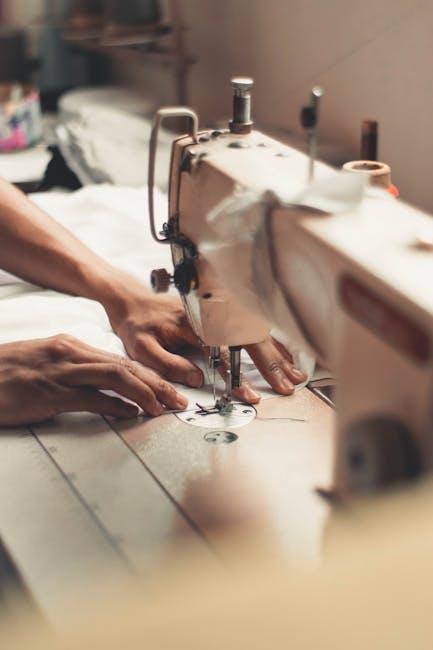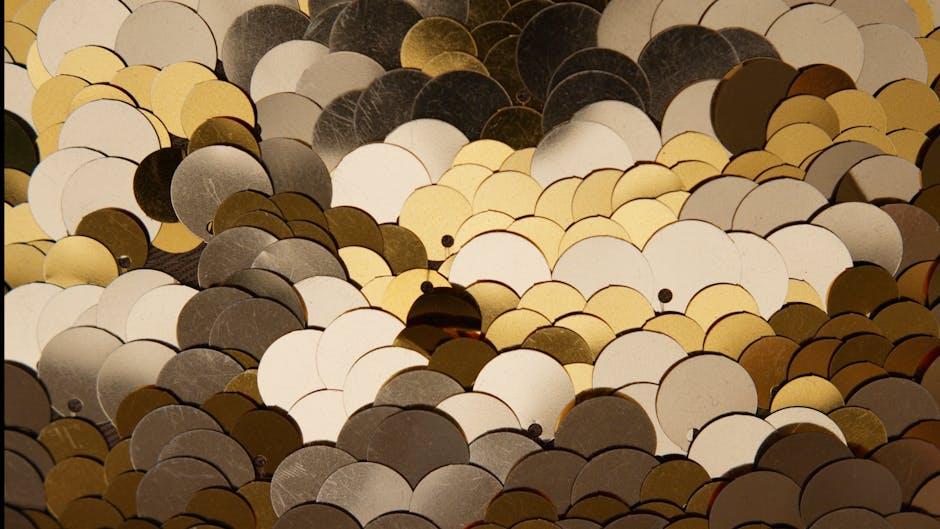In an era where glamour meets conscience, the red carpet is undergoing a transformative revolution. Once a showcase of opulence and extravagance, this iconic stage is now becoming a runway for sustainability. Designers and celebrities alike are weaving eco-friendly fabrics, ethical craftsmanship, and innovative upcycling into their couture creations. As the industry responds to growing environmental awareness, the rise of sustainable red carpet looks signals a new chapter—one where style and sustainability walk hand in hand under the glittering lights. This shift not only redefines elegance but also challenges the very fabric of fashion’s future.
Table of Contents
- The Evolution of Eco-Friendly Fashion on the Red Carpet
- Materials That Make a Difference Sustainable Fabrics and Innovations
- Behind the Seams Ethical Production and Fair Trade Practices
- Celebrities Leading the Sustainable Style Movement
- Styling Tips for Creating a Chic Sustainable Red Carpet Look
- The Future of Glamour Embracing Circular Fashion and Upcycling
- Q&A
- Key Takeaways

The Evolution of Eco-Friendly Fashion on the Red Carpet
Red carpet fashion has long been synonymous with glamour, extravagance, and bold statements, but recent years have witnessed a significant shift. Celebrities and designers are increasingly embracing eco-conscious choices, blending style with sustainability to create memorable, responsible looks. From upcycled fabrics to biodegradable embellishments, the materials tell a story of innovation and respect for the planet. This evolution is not just a trend but a transformation that challenges the traditional notions of luxury. It also highlights key principles driving this shift:
- Transparency in sourcing and production methods
- Collaboration with ethical brands and artisans
- Longevity over fast fashion by valuing timeless design
- Recycling and repurposing of existing garments
To better understand this transition, consider the table below showcasing the types of eco-friendly materials gaining popularity on the red carpet, along with their defining features:
| Material | Source | Eco Benefit | Example Usage |
|---|---|---|---|
| Organic Cotton | Farm-grown without synthetic pesticides | Reduced chemical runoff | Flowing gowns, blouses |
| Recycled Polyester | Repurposed plastic bottles | Less waste in landfills | Structured jackets, suits |
| Piñatex | Pineapple leaf fibers | Utilizes agricultural waste | Handbags, shoes |
| Hemp | Fast-growing plant fiber | Minimal water use | Elegant tunics, trousers |

Materials That Make a Difference Sustainable Fabrics and Innovations
In recent years, the fashion industry on the red carpet has undergone a remarkable transformation, embracing materials that not only dazzle but also respect the planet. Designers are turning to fabrics derived from organic fibers, recycled plastics, and even innovative bioengineered textiles. These alternatives redefine luxury by combining elegance with ecological responsibility. Among the most celebrated are Tencel made from sustainably sourced wood pulp, and Piñatex, crafted from pineapple leaf fibers, both offering stunning textures while reducing environmental impact. This shift reflects a broader awareness and a call for transparency in production processes, pushing the boundaries of what sustainable glamor can achieve.
Innovation continues to fuel the rise of sustainable couture, creating breakthrough fabrics that marry beauty with function. Emerging materials like lab-grown silk, developed through microbial fermentation, and mushroom-based leather, offer cruelty-free and biodegradable options that outshine traditional textiles in environmental friendliness. Here’s a quick look at some of these game-changers:
- Organic Cotton: Grown without harmful pesticides, preserving soil health.
- Recycled Polyester: Made from plastic waste, reducing landfill and ocean pollution.
- Lab-Grown Silk: Animal-free production with the same luxurious feel.
- Mushroom Leather: Decomposes naturally, a smart alternative to animal hides.
| Fabric | Source | Environmental Benefit |
|---|---|---|
| Tencel | Wood pulp (eucalyptus) | Low water usage, biodegradable |
| Piñatex | Pineapple leaves | Utilizes agricultural waste |
| Lab-Grown Silk | Microbial fermentation | Animal-free, less water intensive |
| Mushroom Leather | Mycelium fungus | Biodegradable, vegan-friendly |

Behind the Seams Ethical Production and Fair Trade Practices
In an industry often criticized for waste and opacity, there’s a refreshing pivot towards transparency and ethical integrity. Designers and brands committed to sustainable red carpet fashion are pioneering methods that ensure every stitch is free from exploitation. This movement champions fair wages, safe working conditions, and respect for artisan craftsmanship, turning the spotlight on the heroes behind the scenes who create luxury without compromise. By choosing suppliers who adhere to rigorous ethical standards, these designers honor both the people and the planet involved in each gown and tuxedo.
Collaboration is key, often involving close partnerships with local communities and cooperatives to support sustainable livelihoods. Some brands even publish regular reports illustrating their supply chain progress, allowing consumers to evaluate the true cost of opulence. The following table highlights core principles embraced by such trailblazers:
| Core Principle | Impact |
|---|---|
| Fair Wages | Empowers workers and ensures economic equity |
| Non-Toxic Dyes | Protects environment and factory workers’ health |
| Local Artisans | Preserves traditional skills and boosts communities |
| Closed-Loop Production | Minimizes waste through recycling and reuse |

Celebrities Leading the Sustainable Style Movement
Many high-profile figures are redefining glamour by integrating eco-conscious choices into their wardrobe. Dresses crafted from recycled fabrics, upcycled vintage pieces, and innovations like bio-fabricated textiles are gracing red carpets worldwide, setting a new standard for elegance that doesn’t cost the planet. These trailblazers prove that sustainability and sophistication are not mutually exclusive but beautifully intertwined.
Notable stars who inspire sustainable style include:
- Emma Watson – Champion of ethical brands and vintage couture.
- Pharrell Williams – Promoter of recycled materials in menswear.
- Gisele Bündchen – Advocate for biodegradable fabrics and slow fashion.
| Celebrity | Signature Sustainable Style | Impact |
|---|---|---|
| Emma Watson | Stella McCartney gowns, vintage accessories | Raised awareness for ethical fashion on global stages |
| Pharrell Williams | Recycled plastic suits, eco-friendly headwear | Expanded eco-conscious menswear choices |
| Gisele Bündchen | Organic cotton dresses, biodegradable fabrics | Promoted sustainable materials in luxury fashion |

Styling Tips for Creating a Chic Sustainable Red Carpet Look
Embrace timeless elegance by choosing pieces crafted from natural, biodegradable fabrics like organic cotton, hemp, or bamboo. These materials not only reduce environmental impact but also offer unparalleled comfort and breathability, perfect for a night of glamour. Incorporate statement accessories made from recycled metals or upcycled components, adding a unique twist that speaks volumes about your commitment to sustainability without sacrificing style. Pair a classic silhouette with bold, eco-friendly jewelry to command attention on the red carpet in a responsible yet striking way.
To elevate your outfit further, consider these essential styling strategies:
- Vintage Revival: Scout for timeless vintage gems that tell a story and reduce demand for fast fashion.
- Minimalist Palette: Stick to neutral tones that can be mixed and matched for multiple events, maximizing wardrobe versatility.
- Artisan Detailing: Opt for handcrafted embellishments that give character and support small, sustainable businesses.
| Tip | Benefit |
|---|---|
| Rent Designer Wear | Reduces waste and supports circular fashion economy |
| Choose Recycled Fabrics | Lessens resource consumption and landfill overflow |
| Layer Sustainably | Creates versatile looks with fewer pieces |

The Future of Glamour Embracing Circular Fashion and Upcycling
As the fashion industry pivots toward sustainability, the red carpet is no longer just a parade of opulence but a stage for innovation rooted in responsibility. Designers are breathing new life into forgotten fabrics and once-loved garments, transforming them into showstopping masterpieces that challenge the traditional narrative of luxury. This shift garners attention not only for its aesthetic appeal but also for its impact on reducing fashion waste and conserving resources. Celebrities and stylists alike are embracing these eco-conscious choices, proving that environmental awareness and elegance can coexist seamlessly.
Key elements driving this trend:
- Upcycled Materials: Fabrics repurposed from vintage collections or discarded inventory offer unique textures and stories.
- Modular Designs: Pieces designed to be altered or reassembled, extending the garment’s lifecycle.
- Zero-Waste Techniques: Construction methods that minimize fabric scraps and production offcuts.
| Material | Source | Environmental Benefit |
|---|---|---|
| Silk from Vintage Gowns | Second-hand dealers | Reduces fabric waste |
| Reclaimed Denim | Donation Centers | Limits water usage |
| Organic Cotton Scraps | Fabric workshops | Minimizes chemical runoff |
Q&A
Q&A:
Q1: What does “sustainable red carpet fashion” mean?
A1: Sustainable red carpet fashion refers to styling choices for high-profile events that prioritize environmental responsibility. This includes using eco-friendly materials, ethical production methods, and often repurposing or upcycling garments instead of relying solely on new, resource-intensive creations.
Q2: Why has sustainability become important on the red carpet?
A2: The fashion industry is a major contributor to environmental damage, and the red carpet, often seen as a symbol of luxury and excess, is under scrutiny. Celebrities and designers recognize their influence can inspire change, so embracing sustainability on these high-visibility platforms helps raise awareness and drive industry-wide transformation.
Q3: How are designers adapting their collections for sustainability?
A3: Designers are incorporating organic fabrics, recycled materials, and zero-waste techniques. Some are also focusing on timeless designs rather than fleeting trends, creating pieces meant to be worn repeatedly rather than once and discarded.
Q4: Can you give examples of famous sustainable red carpet moments?
A4: Sure! Actress Emma Watson frequently champions eco-friendly fashion, wearing sustainable gowns at award shows. Actress and activist Jane Fonda has also made headlines by re-wearing vintage pieces on the red carpet, highlighting longevity over disposability.
Q5: Are sustainable looks less glamorous or fashionable?
A5: Not at all. Sustainable fashion can be just as stunning and innovative, often pushing creative boundaries with unique materials and craftsmanship. In some cases, the constraints inspire designers to think more imaginatively, resulting in standout, memorable looks.
Q6: How can the rise of sustainable red carpet looks influence everyday fashion?
A6: High-profile events have a massive cultural impact. When celebrities wear sustainable fashion, it helps normalize responsible choices for everyday consumers, encouraging the broader public to seek out eco-friendly brands and prioritize quality over quantity.
Q7: What challenges does sustainable red carpet fashion face?
A7: Challenges include sourcing truly sustainable materials, overcoming cost barriers, and changing long-standing industry practices focused on rapid turnover. Additionally, some critics question the authenticity of “greenwashing,” where sustainability claims are more about image than real impact.
Q8: What does the future look like for sustainability on the red carpet?
A8: The momentum is growing. Expect to see more collaborations between designers and sustainable innovators, greater transparency in garment production, and possibly new awards celebrating eco-conscious fashion. As awareness deepens, sustainability may become the new standard rather than a niche choice.
Key Takeaways
As the spotlight continues to shine on conscious fashion, sustainable red carpet looks are no longer just a fleeting trend—they are steadily becoming the new standard. Designers and celebrities alike are weaving stories of ethics and elegance, proving that glamour and responsibility can walk hand in hand. In embracing this evolution, the red carpet transforms from a mere stage of spectacle to a powerful platform of change, inspiring not only admiration but action. The rise of sustainable style invites us all to reconsider what true luxury means, reminding us that beauty is most radiant when it respects the world it inhabits.

